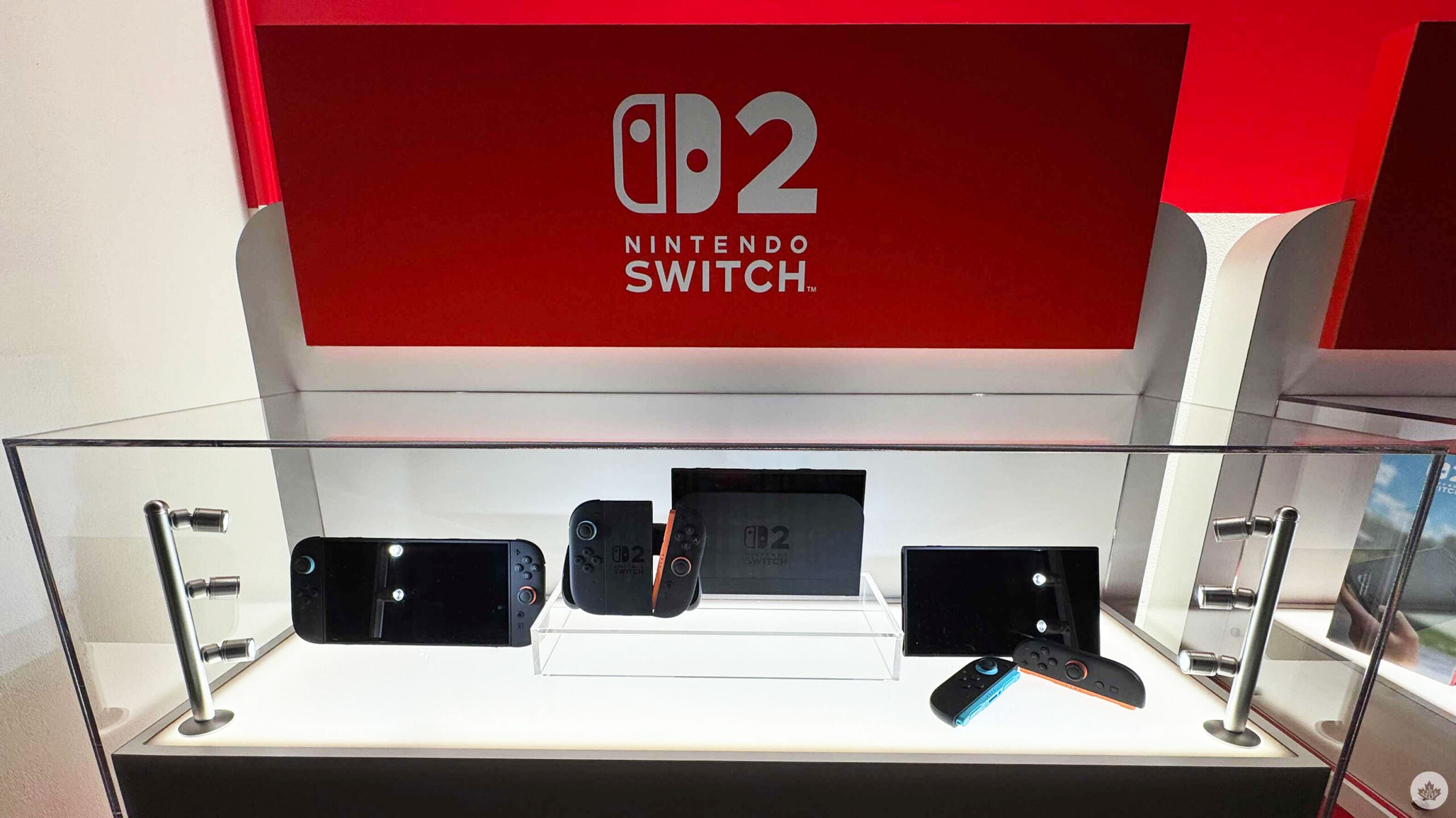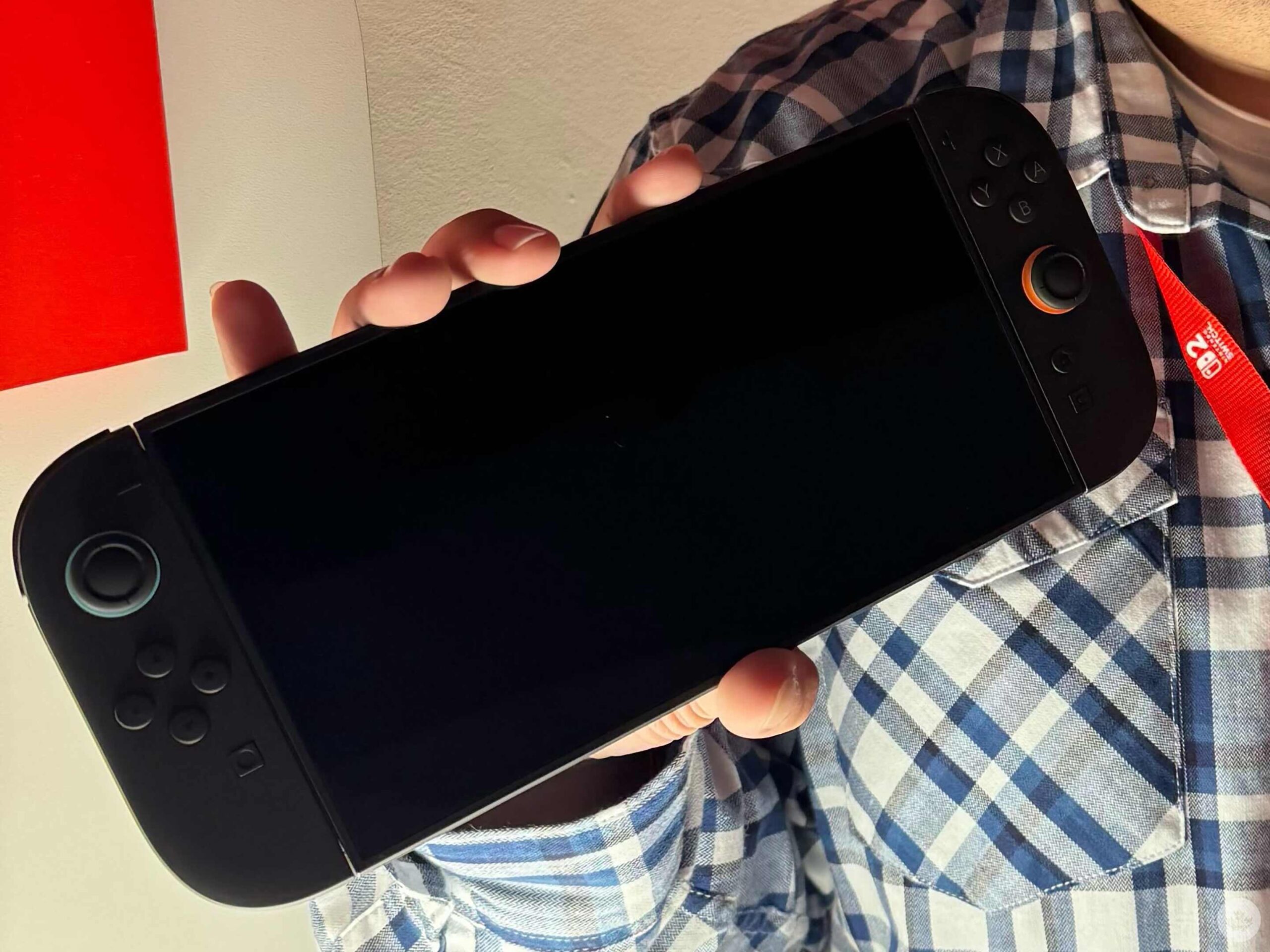
Nintendo was in a unique situation with the Switch 2.
On the one hand, it’s built up tons of good will coming off the Switch, the third best-selling video game system of all time. But at the same time, that massive success understandably means you don’t want any successor to deviate much from that winning formula, even if it means not introducing the kind of innovative new hardware gimmick as in previous generations. Ultimately, Nintendo opted for an “if it ain’t broke” approach with the Switch 2, giving us a console-handheld hybrid that is, fundamentally, the same experience, just better.

But after spending several hours with the Switch 2 at a New York preview event, I think Nintendo’s decision to go for an iterative follow-up to the Switch was overall the right call — for several reasons. I have a separate piece featuring more detailed impressions of the Switch 2 games (including Mario Kart World and Donkey Kong Bananza), but read on below for my general thoughts on the hardware and its unique features.
Improving on a fan-favourite design
While console-quality gaming experiences on the go are commonplace now outside of the Nintendo ecosystem thanks to beefy PC gaming handhelds like the Steam Deck, high-powered iPhones and even robust streaming technology, that wasn’t always the case. It’s easy to forget that it was all the way back in 2017 when Nintendo really began this trend with the Switch. And, of course, the popularity of all of those other kinds of devices only cements the fact that Nintendo was really ahead of the curve.
That’s why I’ve been all for Nintendo continuing on that path with the Switch 2. The Switch has become such a mainstay in many people’s lives, including my own, that I was definitely intrigued to see how Nintendo would take that tried-and-true hardware design and build upon it after all these years. And to the company’s credit, my experience with the Switch 2 so far certainly makes it feel like the company has addressed most areas of improvement that people have cited with the original Switch.
First, and most importantly, is the beefier tech in the Switch 2. Traditionally, Nintendo doesn’t release an extensive list of hardware specs like computer and phone manufacturers do, but it has confirmed the following for the Switch 2:
- 6.5 inches in height and 10.7 inches in length, versus the original Switch’s 4 and 9.4 inches, respectively.
- 7.9-inch wide colour gamut LCD screen, versus the original Switch’s 6.2 inches.
- Handheld: up to 1080p/60fps (handheld) versus up to 720/60fps on the first Switch.
- Docked: up to 4K/60fps or 1080/120fps (for supported games) versus up to 1080p/60fps on the first Switch.
- HDR10 support (new).
- Custom Nvidia processor (new).
- 256GB internal storage versus 32GB for the original Switch.
- 2 to 6.5 hours of battery life (less than the launch Switch’s 2.6 to 6.5 hours and updated models that last between 4.5 and 9 hours).
- Backwards compatibility with nearly every original Switch game.
Clearly, almost all of that is an improvement over the current Switch. In particular, the nearly 1.5-inch larger screen and improved resolution are most welcome. 120fps, while only supported in select titles, can also feel like a proper game-changer, with the fast-paced shooting of Metroid Prime 4: Beyond, especially, benefiting from the higher frame rate. The significantly higher internal storage capacity (which can be further expanded with microSD Express cards) certainly doesn’t hurt either. (That said, it remains to be seen how much bigger Switch 2 game file sizes will be.) And, of course, the new U-shaped kickstand is much more stable than the little flimsy-feeling flap on the OG Switch.

Those are the specs and smaller hardware tweaks for the Switch 2 tablet itself, and then we also have the new magnetic Joy-Con 2 controllers, which replace the previous models that were attached and removed via a sliding rail mechanism. The Switch 2’s Joy-Cons snap on and off with magnets using a release button on their rear, and it feels intuitive and sturdy in practice. Some people had issues with the sliding rails on the original Switch, especially with them becoming loose after prolonged use, so the new magnets system feels like a smart step forward.
Unfortunately, we don’t yet know if the prevalent Joy-Con drift issue has been fixed. During a media roundtable with Switch 2 hardware developers, the company was asked about whether this has been “improved” with the Switch 2. In response, the developers simply said, “the new Joy-Con controllers for the Nintendo Switch 2 have really been designed from the ground up from scratch to have bigger movements and also smoother movements.” That doesn’t really answer the question, of course, and one day of hands-on previews, no matter how extensive, just isn’t enough to gauge whether it’s been fixed, either.
Having said that, there are practically no known trade-offs for the Switch 2’s superior tech at the moment. I was most surprised in that regard when it came to the lightness of the Switch 2; with Joy-Cons attached, it weighs in at .88 lbs/399g, the exact same as the current Switch. Therefore, I was pretty reassured to find that the larger screen size didn’t come at the cost of a heavier unit. I find myself using my Steam Deck much less than my Switch in no small part because the nearly 1.5lb/669g device feels uncomfortably heavy comparatively. What’s more, nearly total backwards compatibility with the original Switch — plus some game-specific Switch 2 upgrades — means you can thankfully bring your library with you.

Really, then, the only real “downgrade” is the inferior battery life, but even then, it’s understandable given the improved specs across the board. As a result, I’m overjoyed that Nintendo didn’t mess with the Switch’s proven design and simply iterated upon it instead.
Old dog, new tricks
But of course, the Switch 2 also introduces some genuinely new features, and this is where it gets pretty interesting.
My absolute favourite of these is the much talked-about mouse functionality that we’ve seen rumoured and officially teased for some time. All you have to do is detach the Joy-Cons and place the connection rail facedown on a flat surface, and voilà, you have your makeshift mouse.
Now, I didn’t initially know what to think of this. While Nintendo’s often been forward-thinking about unique hardware features, some of them have perhaps come earlier than they were ready, like the Wii’s uneven motion controls. But even based on my demo, I’m already a huge believer in the mouse functionality.
Right off the bat, I was impressed at how smoothly it rolls on a surface. Given that they’re thin little devices not primarily intended to be used as mice, I figured there’d be a little friction here and there, but I didn’t experience any of that during my various demos. It slides along really well, and Nintendo even ensured that this extends to surfaces like the pants you might be wearing, considering that console players generally don’t have desks right in front of them. Even on fairly a rough material like my jeans, the Joy-Cons glided along without any resistance. I’m sure many elitist hardcore PC gamers will scoff at how “inferior” the Joy-Cons are to proper mice, but for the average Switch 2 owner who primarily plays on console, this will be more than sufficient.

But even more important than how they feel is how useful they actually are in a given game, and nowhere was that more applicable for me than Metroid Prime 4: Beyond. A hallmark of the Prime series is carefully aiming your shots to hit specific targets, like locks on a door or weak points on an enemy. While the analogue sticks on the Joy-Cons or Pro Controller certainly work well, there is, naturally, an added layer of precision and intuitiveness afforded by a mouse. It makes the rhythm of combat — strafing, jumping and Morph Ball-transforming — feel that much more fluid, especially with the aforementioned 120fps support. Best of all, this mouse functionality is built into the Joy-Cons that already come with your Switch 2, so you can of course opt to just not use it for any reason. It’s simply a highly welcome option.
Of course, shooters aren’t the only genre that benefit immensely from mouse functionality. One of the Switch 2’s confirmed third-party launch titles is Civilization VII, and that’s the kind of game that practically begs to be played with a mouse. After all, it’s a remarkably deep strategy experience with a seemingly never-ending string of menus, tabs and units to manage, and these are infinitely easier to navigate with a mouse. Admittedly, I’ve never played Civ, so I found this all pretty overwhelming, but the mouse functionality at least made it a bit more palatable.
The biggest question mark is how many games will actually support the mouse feature, especially if they incorporate it in more integral ways. One such game that Nintendo showed off, Drag X Drive, a wheelchair basketball game in which you alternate between sliding the Joy-Con “mice” to steer before lifting your arms to take a motion-controlled shot. It’s a brilliant concept, both as a new IP and one that features something as often-underrepresented in games as disabilities, but I’m not sure it’s all that great in practice. For one, it takes quite a bit of getting used to the alternating slide-steer-aim-shoot Joy-Con maneuvers, and even still, it seems like more of a tech demo than a truly meaty experience that’d have you coming back.
I, for one, would love to see a range of games that incorporate mouse support, be it the inevitable new Fire Emblem or new Mario Paint. I also have fond memories playing one Pictionary-esque mode in Game & Wario on the Wii U with my friend and his family that had you drawing on the tablet. Those sorts of unique experiences that use the mouse in various ways would go a long way to really fleshing out the feature.
The other big new Switch 2 feature is GameChat, which is tied to the new ‘C’ button. At long last, Nintendo is embracing native voice chat rather than some hilariously convoluted app-based solution, and it’s even given the Switch 2 a built-in microphone for that very purpose. It’s a pretty robust mic, at that, being able to pick up voices when docked or in handhold mode and even filter out background noise. On top of that, GameChat allows you to create Discord-esque group calls in which you can screen share with one another, and you don’t even need to be playing the same game. And finally, the C button lets you access GameShare, a new feature that allows groups to party up locally and play select games that only one user owns, such as Super Mario 3D World, Super Mario Odyssey and Club House Games.
I’m not someone who plays a lot of multiplayer games, and I didn’t get to try these features in this demo space, naturally. Nonetheless, these are undeniably neat ways to bring people closer together, both in-person and when they’re not actually in the same room. It should be noted that GameChat will eventually require Nintendo Switch Online, but you’ll be able to try it out for free until March 31, 2026.
Not without some reservations

While I’ve mentioned a lot of compelling aspects of the Nintendo Switch 2, the main talking point for many people has, understandably, been about its US$449/C$629 price tag (and $699 for the Mario Kart World bundle). It’s a completely reasonable concern, given that this is well above the $399 current Switch. For context, this puts it significantly more expensive than the $379 Xbox Series S, slightly pricier than the $579 disc-less PS5 and on par with the $649 standard PS5 and Xbox Series X. That’s a steep price, especially when many of the games are holdovers from the Switch. It’s also to say nothing of the fact that Switch 2 games could cost $100 or more in Canada.
It’s why I find it a bit hard to say whether the Switch 2 would be “worth” it for you, especially given the general instability of the current economic climate amid the ever-changing policies of the U.S. government. If you’re someone who doesn’t regularly use your Switch, the Switch 2’s improved specs and hardware features, alongside a few exclusive games like Mario Kart World and Donkey Kong Bananza, probably aren’t enough to warrant an upgrade at this price. On the flip side, it seems like a logical choice if your Switch is your main console, particularly since your games carry over.
Ultimately, though, this was just one preview opportunity, so I hope to go hands-on with the final product and give a fully-formed opinion. I like a lot of what I’ve played so far — I just need to see a bit more.
The Nintendo Switch 2 launches worldwide on June 5.
MobileSyrup may earn a commission from purchases made via our links, which helps fund the journalism we provide free on our website. These links do not influence our editorial content. Support us here.


